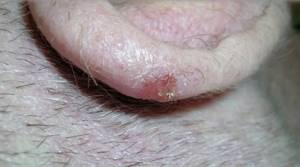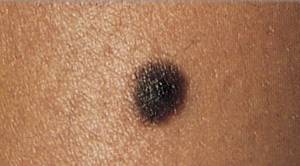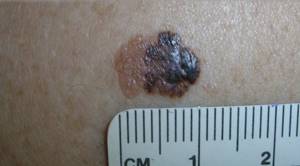Article on the topic
Enlighten me! Who needs a mammogram?
Such an attitude towards the most delicate area of the female body is unacceptable. After all, even painful tension in the chest before menstruation, small lumps and slight discharge from the nipples are a reason to consult a mammologist. By the way, problems with the thyroid gland, adrenal glands, stress, taking hormonal medications and contraceptives can also affect the condition of the bust. In a word, in order not to face such a serious diagnosis as breast cancer, start preventing this dangerous disease right now.
Pay attention to your diet
Healthy breasts require giving up not only cigarettes, but also an extra cup of coffee and alcohol. The most you can afford is a glass of red wine with lunch. The rest is unnecessary risk. Include foods rich in vitamin C in your diet - lemons, kiwi, bell peppers, cabbage. You should not give up carrots, tomatoes, dill and spinach, which contain vitamin A - it increases antitumor resistance. Vegetable oil and cereals, thanks to vitamin E, prevent or inhibit the appearance of tumors and slow down the aging process. The trace element selenium plays an important role in the prevention of breast cancer. It is able to selectively accumulate in tumor cells and prevent their destructive activity. Therefore, include seeds, garlic, shrimp and fish in your diet.
Squamous cell skin cancer
- Squamous Cell Cancer - This type of cancer arises from a common age-related keratosis, as in this photo.
- Squamous cell carcinomas are often mistaken for keratosis, so the Association of American Oncologists recommends that keratotic skin lesions be examined by punch biopsy.
- Squamous cell carcinoma may appear as red or brown spots with a rough, scaly surface. This type of formation grows slowly on sun-exposed areas of the body, such as the face, ears, neck, lips, back and arms.
- Squamous cell carcinoma can develop in scars or skin wounds on any part of the body.
- Squamous cell skin cancer grows slowly and is curable at an early stage in 95% of cases. But if no measures are taken, the tumor has a high risk of invasion into the deep layers of the skin and metastasis to other organs and areas of the body.
- Squamous cell carcinoma - This type of cancer arises from a normal age-related keratosis, as in this photo. Squamous cell carcinoma is often mistaken for keratosis, so according to the recommendations of the American Oncology Association, keratotic skin lesions should be examined through a punch biopsy
Do a self-examination
Try to find out if women in your family have had breast problems. If yes, urgently learn self-examination techniques. Periodically feel your breasts to identify the presence of lumps, nodules, roughness on the skin, and soreness. Self-examination should be carried out once a month (and on the same days!). If you find something unclear, consult a doctor immediately. You can perform a breast self-examination: Lying down. Place a pillow under your right shoulder blade and raise your arm above your head. First, examine the right breast (with the fingers of your left hand) in a circular motion with light pressure, starting from the edges of the mammary gland towards the nipple.
In the shower. Raise your right hand. With the fingers of your left hand, feel all parts of the right mammary gland, paying attention to whether there are any swelling or lumps. The left breast is examined in the same way.
At the mirror. Examine the chest, first lowering your hands and then raising them.
Pay attention to any enlargements, changes in skin color or shape. Gently squeeze both nipples at the base and make sure there is no colorless or bloody discharge.
Bowen's disease
- It is the earliest form of squamous cell skin cancer. Bowen's disease usually appears as rough patches on the skin, sometimes on the surface of the anus, or on the genitals. Malignant spots are usually larger and redder than age keratosis. Bowen's disease is difficult to distinguish from squamous cell carcinoma and can sometimes become invasive, so doctors recommend prompt treatment.
- Squamous cell carcinoma may appear as red or brown spots with a rough, scaly surface. This type of formation grows slowly on sun-exposed areas of the body, such as the face, ears, neck, lips, back and arms.
- Squamous cell carcinoma can develop in scars or skin wounds on any part of the body.

- Squamous cell skin cancer grows slowly and is curable at an early stage in 95% of cases. But if no measures are taken, the tumor has a high risk of invasion into the deep layers of the skin and metastasis to other organs and areas of the body.

- Almost everyone has some kind of mole and many of them are harmless. The photo shows a healthy nevus. It has a uniform color, shape and borders, unlike melanoma, which may have the symptoms described in this article - Signs of melanoma. Melanoma appears in the cells that are initially responsible for skin pigmentation, masquerading as a regular mole. The main thing is to notice changes in the nevus in time to exclude a malignant process.

Go to a doctor
If during a self-examination you find a lump or notice discharge from the nipple, contact a mammologist. The accuracy of diagnosis by an experienced specialist is 90-95%. When examining the mammary glands, the doctor usually uses a “diagnostic triangle”: examination, visualization of the condition (mammography and ultrasound) and, if necessary, a biopsy (a tiny piece of tissue is taken and examined under a microscope). If during the examination the mammologist finds discharge from the nipple, he can take a smear and send it to the laboratory for examination. The second stage of the preventive examination is ultrasound and mammography. By the way, the last method is much more effective. Mammography is an x-ray examination that can detect even a small formation that is not detectable upon examination and palpation.
Bowen's disease
- It is the earliest form of squamous cell skin cancer. Bowen's disease usually appears as rough patches on the skin, sometimes on the surface of the anus, or on the genitals. Malignant spots are usually larger and redder than age keratosis. Bowen's disease is difficult to distinguish from squamous cell carcinoma and can sometimes become invasive, so doctors recommend prompt treatment.
- Squamous cell carcinoma may appear as red or brown spots with a rough, scaly surface. This type of formation grows slowly on sun-exposed areas of the body, such as the face, ears, neck, lips, back and arms.
- Squamous cell carcinoma can develop in scars or skin wounds on any part of the body.
- Squamous cell skin cancer grows slowly and is curable at an early stage in 95% of cases. But if no measures are taken, the tumor has a high risk of invasion into the deep layers of the skin and metastasis to other organs and areas of the body.
- Almost everyone has some kind of mole and many of them are harmless. The photo shows a healthy nevus. It has a uniform color, shape and borders, unlike melanoma, which may have the symptoms described in this article - Signs of melanoma. Melanoma appears in the cells that are initially responsible for skin pigmentation, masquerading as a regular mole. The main thing is to notice changes in the nevus in time to exclude a malignant process.
A loved one was diagnosed with breast cancer. How to help?
According to statistics, one in eight women will be diagnosed with breast cancer during their lifetime. Each of them will react to the diagnosis differently, but everyone without exception will need the help and understanding of their loved ones. While doctors are dealing with medical issues, it is important not to miss the emotional component, because the success of treatment largely depends on the psychological mood. Breast cancer what to do
FIRST SUSPECTS: “SOMETHING IS WRONG!”
This is a truly worrying moment. When a woman takes a shower, applies moisturizer, or performs one of her regular self-exams, she suddenly notices changes. Breasts look different. Or a lump is felt under the skin. Or unusual sensations appear in the chest. There is a very high probability that such changes are not malignant. And yet, few people do not think about cancer at the first moment.
“One day I discovered a lump in my left breast when I was drying myself after a shower,” says Evgenia, 48 years old. “I thought it was a cyst - I’ve had similar formations before. In addition, six months before this I had a mammogram, and everything was clear. So for several months I convinced myself that everything was fine. Even when it was obvious that my lump didn’t feel like a cyst at all, I continued to put off visiting the doctor. Afterwards, when the diagnosis had already been made, all my relatives asked me why I was silent for so long. But the point is that neither the doctor, nor the husband, nor the girlfriend will ever be able to understand the horror that grips you when you suspect cancer. When I finally made an appointment and came to see the doctor, I was sent for examination the same day. The doctor said that the results were unclear and that it was necessary to undergo another examination in a week. Every day dragged on for me like a year. I was still convincing myself that it was most likely not cancer. But deep down I understood that most likely I had cancer.”
WHAT CAN BE DONE?
For the patient
Act as quickly as possible. Make an appointment with your doctor immediately after you notice alarming symptoms. If the education is benign, you will save yourself from unnecessary worries. If it is cancer, you will increase the effectiveness of treatment many times over.
While you are waiting for the results of the examination, continue to lead an active lifestyle, work, distract yourself from your worries as much as possible, and share your worries with someone close to you.
For family and friends
Try to balance the desire to offer encouragement and hope with the need to take symptoms seriously. Offer to go together to see a doctor, for an examination, to get the results. Agree on how to proceed after the results are announced. Will you go together? Or call/text immediately after the woman leaves the doctor? Or does she prefer to call herself when she's ready? Stick to these agreements, even if you are going crazy with anxiety waiting for the promised call. breast cancer
DIAGNOSIS MADE: “IT’S CANCER”
These two words, in a matter of seconds, change a person’s life and attitude towards everything - to his body, to health, to family, to work, to the future. For many patients, an oncological diagnosis causes shock, anger, a sense of injustice, panic, and self-pity. Some give up, some withdraw into themselves or become depressed, others, on the contrary, rush into battle with the disease.
Svetlana (42 years old) was diagnosed a month after she got married for the second time.
“I went to the doctor to get examined before planning a pregnancy. My husband and I already had children from previous marriages, but we decided that we both wanted another baby. I wanted to find out if I could conceive and carry a child, but I found out that I had breast cancer. My first thought was: “That’s it, I’m going to die soon.” And until the treatment began, I lived only with this thought. I closed myself off, told only my sister about the diagnosis and forbade her to talk about it with anyone. When things got really bad, I went to a forum where women with the same diagnosis communicated. It helped."
It is only natural that many people think, “Why did this happen to me?” Bad environment (“I should have moved to the village!”), stress (“It’s all because of the divorce!”), incorrect lifestyle (“Is it all because of the wine? Or because of the red meat?!”).
“I kept trying to find at least some explanation of what was happening,” says Elena. “I bombarded the doctor with questions about where my mistake was, what I did wrong. Luckily, my doctor found the right words. She said: “You are not to blame for anything. Science doesn't know why some people get cancer and others don't. It’s just an unfavorable coincidence of circumstances, it’s not your fault.”
With all the range of emotions that overwhelm the woman herself after the final diagnosis, there remains one more very difficult task - to tell loved ones about the disease.
“I waited several days before I could gather the strength to tell my husband and children everything,” admits Anastasia, 37 years old. “I chose the first day off during the May holidays; we had to spend several days together. First I told my husband, then we talked to the children together - they were 13 and 14 years old at the time. We decided that the boys should know the truth, but, of course, everything was presented in an optimistic manner: mom got sick, in a few days she begins treatment, the diagnosis was made on time, we have the best doctor.”
Many people prefer to postpone talking with loved ones until a clear treatment plan has been developed. “From the very beginning, only my husband knew about the suspicions; we told the others only a month later, when everything was determined: diagnosis, stage, date of surgery, subsequent treatment,” says Ekaterina. “The hardest thing was to tell my parents.” They are both in their seventies, and I saw how hard they took it all. My husband went with me to all the examinations and asked the doctors a million questions. And I sat and thought: “I don’t want to know all this! Let's just start the treatment!"
“When my wife was diagnosed, the thing that bothered me the most was that there was nothing I could do to help! – says Mikhail. “After a few days I realized: the only thing I can do is be there for her when it’s hard for her.” And he began to do everything possible: he drove him to the doctor, held his hand, told stupid jokes, helped around the house. And we did it! Eight years have passed since then, and my wife feels well.”
WHAT CAN BE DONE?
For the patient
Try not to panic. Focus on small tasks that need to be solved right now in order to undergo examinations, prescribe treatment, and adjust your usual lifestyle. Choose a trusted person from among your loved ones (for example, a husband or sister) who will communicate news about the treatment to all your loved ones and relatives, so that you do not have to retell the same thing a hundred times if you don’t want to. If you don't want to tell anyone yet, don't tell. If you don't want to talk to certain people, don't talk to them.
Stay away from the horrors of the Internet. Want to know about options and forecasts? Ask your husband to study the information and give you the bottom line. This will give you the information you need without having to read scary details.
For family and friends
Find someone you can share your feelings with so you don't take it out on the woman battling cancer. Try to adapt to the patient. If she wants to be alone, give her that opportunity. If, on the contrary, she needs to pour out her soul, listen. Try to maintain a middle ground between reality (do not deny or downplay the seriousness of what is happening) and the ability to look into the future with optimism. Don't offer your own explanations for what happened (“It's all because you were so worried”), advice (“You should only eat organic fruits and vegetables”) or predictions (“I'm sure you can handle it”). If you are not one of your closest friends or family, offer to help, but don't force your company. Don't lose touch. Yes, you are afraid of saying the wrong thing or disturbing the person even more, but this does not mean that you need to stop communicating. If you are not sure that a woman is ready to talk, write an email, SMS or message on social networks. If she wants to chat, she will answer.
TREATMENT: “WILL I BE ABLE TO CANDLE THIS?”
Many people compare cancer treatment to a long black tunnel. Yes, you see a glimmer of light somewhere in the distance, but right now you are in darkness and thoughts appear that this darkness and helplessness will never end. The very first thing you need to realize is that there is no single correct approach that will help you cope with treatment.
Someone decisively rushes into battle:
“I told myself that cancer was the enemy that I had declared war on. Surgery, chemistry, drugs were my weapons that drove out the enemy. Therefore, even the mastectomy was not a tragedy for me: I imagined that the cancer would go away along with this flesh.” But many women find the need for surgery and the side effects of treatment (mainly hair loss) very difficult. “When the chemo started, I felt miserable from morning to evening, 24 hours a day. I cried, suffered, could not even move from fatigue. The only thing that helped distract me a little were visualization techniques that my husband found on the Internet.”
The support of loved ones is important to everyone, and the opportunity to maintain contact with patients who are undergoing the same treatment is also very useful. “The hospital where I was treated had a support group for women. And being able to talk to people who understood how I felt helped keep me going. And every time before chemotherapy, my best friend invited me to breakfast in a cafe.”
Chemotherapy causes mixed emotions in patients. A woman who is used to being strong and caring for loved ones may worry that she has become a burden. Those who have not previously experienced serious illness often feel betrayed by their own body. The friends you would like to count on do not always know how to find the right words. And someone even says that they would like to help, but cannot, and stops calling.
The usual life ends, and family members often have it no easier than the patient herself. The husband and family would be happy to support, but they feel helpless, they are also afraid, tired and also angry.
WHAT CAN BE DONE?
For the patient
Don't play hero. You may have difficult days when you have no strength for anything. Plan enjoyable activities between chemo treatments when you are feeling well. Talk heart to heart. Try to find a person (this could be a psychologist, a member of a support group, or just someone from not too close circle) with whom you can speak frankly and not be afraid that you will upset or scare him.
Accept help from others. This will make them feel useful. But do not hesitate to refuse if the help is not needed or is presented in a form that is incorrect for you. Communicate more with those who make you feel good. There is nothing wrong with distancing yourself from people who make you feel worse after talking to them. Don't forget that it's not easy for your loved ones either. They worry, are afraid and cannot change anything - remember this.
For family and friends
Offer specific help. Instead of “call if you need anything,” offer to help with cleaning, go to the store, pick up your child from school, drive you to the doctor, or go to chemotherapy together. Do not tell the patient that she must “be strong.” This puts even more pressure on a woman who is hurt and scared.
TREATMENT ENDS: “WHAT WILL MY LIFE BE NOW?”
When a difficult treatment comes to an end, the emotional burden only intensifies, and many patients are completely unprepared for this. You expected to feel joyful, relieved, full of hope and plans for the future. In fact, in many cases, after treatment, women experience even more fear, anxiety and uncertainty about the future. This is another stage of overcoming, during which you have to accept new rules of the game, a body that has noticeably changed, relationships with loved ones that have also become completely different.
“It seemed to me that during treatment I had forgotten what a normal life was,” says Elena. “When I left the doctor’s office with a recommendation to come for an examination in six months, I had the feeling that I had been abandoned in the middle of the ocean in a fragile boat, and even without oars. It seemed like my body no longer had anything to do with me. I looked at the reflection in the mirror and didn’t recognize myself! For me, the whole world turned upside down, and those around me behaved as if nothing had changed. And I wanted to cry every minute. They say that people who survive a serious illness become wiser and more tolerant. Where there! Every little thing drove me crazy.”
Fatigue accumulates, many develop apathy, sleep disturbances, and depression. A woman who just a few weeks ago bravely dealt with chemotherapy and its consequences is now frightened by every sneeze. And friends and family, who just a few weeks ago were ready to help and support, are in a hurry to return to normal life and wonder: what’s the matter? You beat cancer, so why are you moping?
WHAT CAN BE DONE?
For the patient
Give yourself time to process the changes that have taken place in your life. During this period, it will be very useful to consult a psychologist or join a support group. Take your time to return to your normal rhythm of life. Physical and emotional adaptation may take months or even years. Be aware of which symptoms to look out for right away. If something is bothering you, make an appointment with your doctor without delay. Don't be afraid of fear. It is natural that you worry about the future and whether the disease will come back. Psychologists recommend this technique: spend a few minutes every day on your fears, worry from the bottom of your heart, then switch to everyday affairs.
Don't forget to remind yourself how great you are. You did it! As recommended by your doctor, start exercising a little. Being active will improve your mood and help you feel more confident physically.
For family and friends
If after treatment a woman is in the mood to celebrate, celebrate. If her mood is not too rosy, know that an adaptation period is necessary, and it will end sooner or later.
Listen to the woman’s feelings, but don’t try to solve all the problems for her. Offer help and support. This is needed now more than ever.
Home






